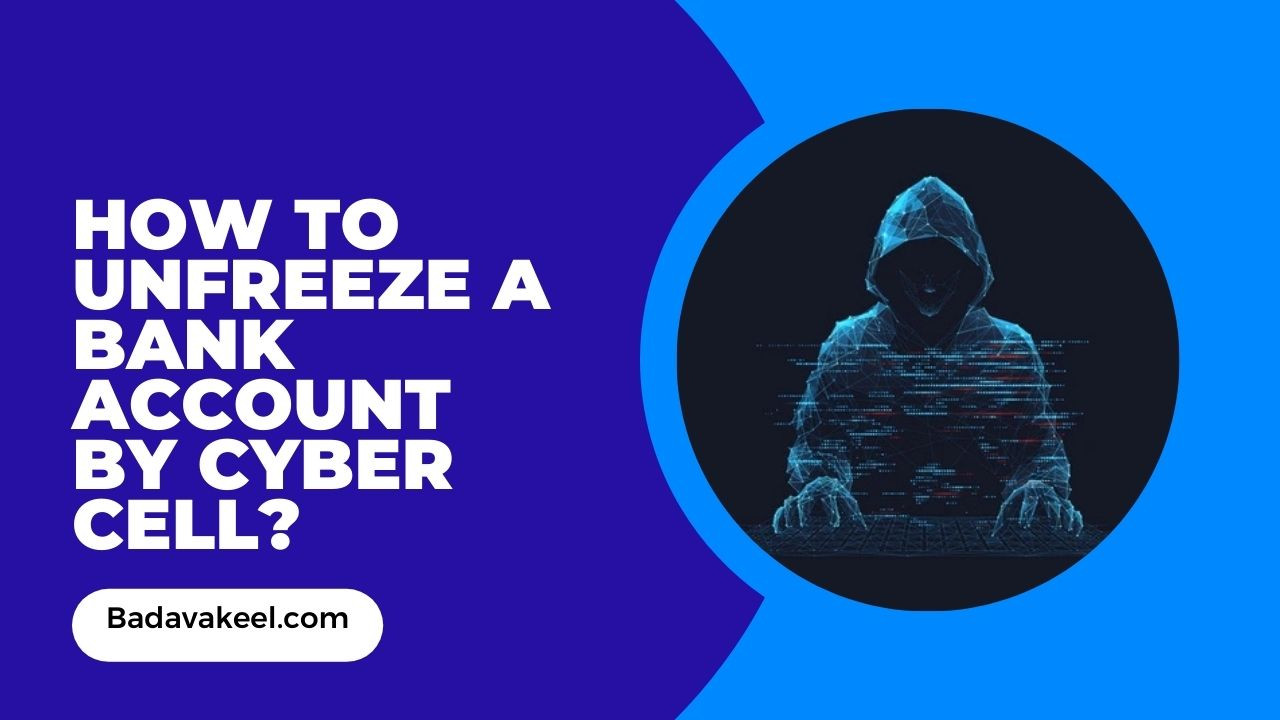How to Unfreeze a Bank Account by Cyber Cell?
In recent years, incidents involving bank account freezes due to cybercrime investigations have been on the rise. These freezes often result from peer-to-peer (P2P) transactions associated with online gaming or cryptocurrency trades, such as USDT transfers on platforms like Binance. While these measures aim to curb cybercriminal activities, they sometimes entangle innocent individuals in the process. If your bank account has been frozen by the Cyber Crime Branch, understanding the reasons and knowing the steps to resolve the issue is crucial.
This article provides a detailed guide to help you navigate this challenging situation effectively.
Why Bank Accounts Get Frozen
Bank accounts are often frozen or marked with a lien as part of cybercrime investigations. Here’s why:
Use of P2P Transactions in Cybercrime:
Cybercriminals leverage platforms like online games and cryptocurrency exchanges to launder large sums of money. They initiate small transactions involving a few thousand rupees to build trust, but these are part of larger fraudulent schemes involving crores.Chain of Transactions:
Money moves through multiple accounts in a P2P chain before reaching its final recipient. If your account is part of this chain, even unknowingly, it might be flagged as part of the fraudulent activity.Cybercrime Investigations:
Law enforcement agencies freeze accounts linked to suspicious transactions to prevent further loss of funds and facilitate investigations.
Steps to Unfreeze Your Bank Account
1. Identify the Origin of the Freeze
- Contact your bank to determine which police station or Cyber Crime Branch issued the freeze order.
- Request details about the reason for the freeze and the associated complaint.
2. Gather Relevant Documents
Collect all pertinent information, such as:
- Bank account statements
- Cryptocurrency transaction records (e.g., USDT transfers)
- Communication records with the bank or law enforcement
3. Consult a Lawyer
- Hire a lawyer specializing in cybercrime or financial disputes.
- A lawyer can draft a professional letter explaining your role and innocence in the transactions and provide guidance for further legal steps.
4. Submit a Written Explanation
- Send a detailed letter to the police station that issued the freeze order. Include:
- A clear explanation of your transactions
- Supporting documents such as transaction history and account statements
- Highlight your willingness to cooperate and return any disputed funds to the complainant if necessary.
5. Negotiate with the Complainant
- If the complainant agrees to withdraw the complaint, the Cyber Crime Branch may close the case.
- This could expedite the unfreezing of your account.
6. File a Legal Petition if Necessary
- If the issue remains unresolved, your lawyer can file a case in court requesting the account to be unfrozen.
- Provide all evidence proving your innocence and non-involvement in the cybercrime.
7. Maintain Transparency and Cooperation
- Fully cooperate with the authorities during their investigation.
- Avoid withholding information, as transparency can speed up the resolution process.
Key Considerations
Certification and Legal Guidance
- Seek certified legal assistance to ensure your rights are protected.
- Collaborate with professionals who understand cybercrime laws and procedures.
Awards for Resolving Disputes
Organizations like banks and consumer forums may recognize efforts to resolve disputes amicably, bolstering your credibility.
Case Study Example
Case: An individual received ₹1 lakh in their account from a P2P transaction as part of a cryptocurrency sale. Unknowingly, the funds were linked to a larger fraud. By:
- Submitting detailed transaction records
- Cooperating with authorities
- Returning the disputed funds
Their account was unfrozen within two months after the complainant withdrew their complaint.
Frequently Asked Questions (FAQs)
Q1: Why was my bank account frozen without notice?
Your account may have been frozen due to its involvement in a chain of transactions linked to cybercrime. The Cyber Crime Branch often freezes accounts as a preventive measure during investigations.
Q2: Can I use my account while it’s frozen?
No, a frozen account restricts all transactions, including withdrawals and transfers, until the freeze is lifted.
Q3: How long does it take to unfreeze an account?
The timeline depends on the complexity of the case, your cooperation, and whether the complainant withdraws their complaint. It can take weeks to months.
Q4: What happens if I don’t take any action?
Failing to address the issue may lead to prolonged freezing of your account or legal action against you if your account is implicated in the cybercrime.
Q5: Can I file a complaint against the freeze?
Yes, if you believe the freeze was unjustified, consult your lawyer to file a petition in court for relief.
Conclusion
Having your bank account frozen by the Cyber Crime Branch can be a distressing experience. However, understanding the reasons behind the freeze and following the correct procedures can help resolve the issue. Always consult with legal professionals, cooperate with authorities, and maintain transparent communication to protect your interests and ensure a favorable outcome.
For additional assistance, contact contact@badavakeel.com or Call +91 8100007400

